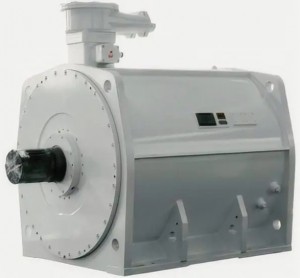Encoders play a vital role in modern electric motor systems as front-end measurement elements that monitor a variety of parameters in real time. These devices are essential for tracking the current, speed, and relative position of the motor shaft in the circumferential direction. By providing accurate and timely information about the motor’s operating status, encoders can enhance control and efficiency in a variety of applications.
One of the main reasons for installing encoders on three phase asynchronous motors is that they can improve performance and accuracy. Through real-time data collection, encoders can make precise adjustments to the operation of the motor to ensure optimal performance. This is especially important in applications that require high levels of accuracy, such as robotics, CNC machinery, and conveyor systems.
There are four main types of encoder, distinguished by their detection principle: optical, magnetic, inductive and capacitive. Each encoder has its own unique advantages and is suitable for different applications. Optical encoders are renowned for their high resolution and accuracy, making them the ideal choice for precision tasks. Magnetic encoders, on the other hand, are more robust and can operate effectively in harsh environments, making them the perfect solution for industrial applications.
Integrating encoders into three phase induction motor systems is critical to achieving high performance, high accuracy, and high reliability. By providing real-time data on key parameters, encoders can not only improve motor operating efficiency, but also improve maintenance practices, ultimately achieving more efficient and economical operation.
Post time: Dec-19-2024


